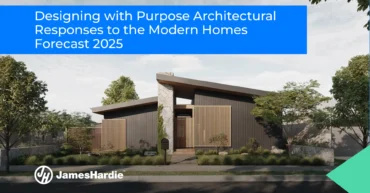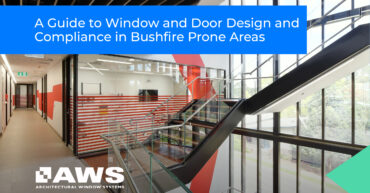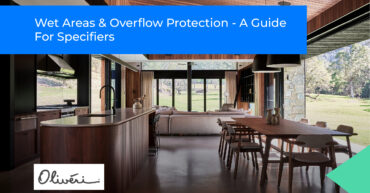Networked Smart Lockers – How they work & how to specify them
Just as it has elsewhere, connectivity has arrived and transformed commercial environments. As a result, the modern workplace is a space where employee well-being is paramount, efficiency is optimised, and technology is employed seamlessly to improve business outcomes. In this context, the introduction of things like Smart Lockers makes perfect sense. Beyond ensuring the security […]
This session will delve into how James Hardie’s Modern Homes Forecast 2025 has identified influential lifestyle themes—such as building efficiency, wellbeing, flexibility and resilience—and how these themes are being translated into innovative, future-ready home styles. We’ll explore how shifts in global and local drivers are prompting new approaches in material selection, spatial planning and sustainable […]
Australia’s bushfire-prone environment presents unique challenges for building design, particularly when it comes to windows and doors. These elements play a critical role in protecting structures from ember attack, radiant heat, and direct flame exposure. Compliance with bushfire construction standards is not just a regulatory requirement—it is essential for enhancing resilience and safeguarding lives and […]
Solar energy is fast becoming a defining element of contemporary architecture, offering opportunities to improve building performance, reduce operational costs and contribute to Australia’s transition toward a low-carbon future. However, integrating solar technology into the built environment often raises challenges around aesthetics, structural compatibility, and design intent. Building Integrated Photovoltaics (BIPVs) present an innovative solution—allowing […]
The curtain wall, with its high transparency and refined aesthetic, is a common façade system for office projects and increasingly also for high rise residential. There are many good reasons architects choose to specify these lightweight, non-structural façade systems. They provide protection from the elements; help moderate the effects of wind and minimise building sway; […]
Indoor Environmental Quality (IEQ) – the overall quality of a building’s indoor environment from the perspective of the health and wellbeing of its occupants – is a fundamental aspect of building science. A complex notion, it relates to – and is affected by – a range of factors, including thermal comfort, acoustic comfort, indoor air […]
According to the Australian Bureau of Statistics, as of 2022, 5.5 million Australians (21.4% of the total population) were living with disabilities. Many of these people face ambulatory challenges. For various reasons, they find it difficult to navigate uneven surfaces, to climb stairs, and so on. Add to this the effects of ageing, and the […]
Within wet areas – in bathrooms, laundries and kitchens – there exists an ongoing risk of overflows and excess water accumulation. Needless to say, the negative consequences of such events – which range from musty, damp, and unhealthy conditions to corrosion and building damage – are worth avoiding. In Australia, regulatory requirements are in place […]
Not to be confused with products that feature crystalline silica, which represent an OHS threat and have been banned in Australia since July 2024, sintered stone is an alternative man-made [KD5] [DM6] surfacing material, typically made from a mix of clays, feldspar, and natural mineral oxides. Waterproof, UV resistant, and hygienic, it delivers a range […]
Within today’s architectural landscape, maximising space efficiency is a critical challenge. With increasing urban density, stricter regulations, and evolving user demands, architects and designers must find ways to optimise building layouts without compromising functionality, aesthetics, or long-term adaptability. In this session of CPD Live, we explore how space planning and innovative engineering solutions can unlock […]










